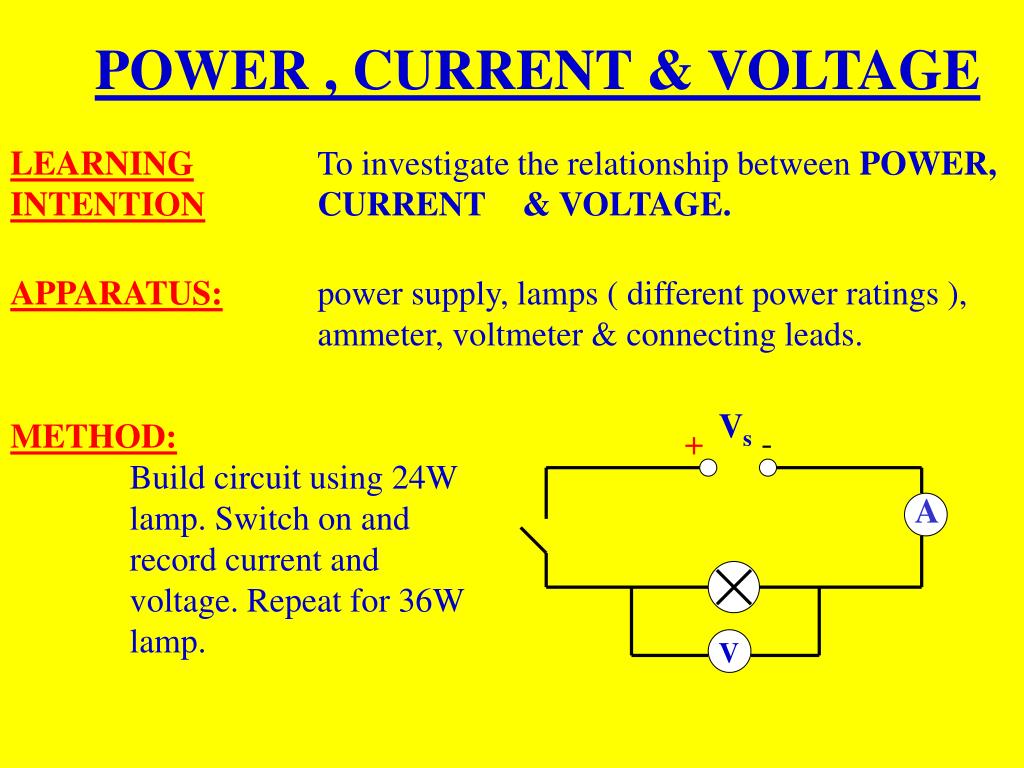Featured
- Get link
- X
- Other Apps
Infer The Relationship Between Current And Voltage Ppt
Infer The Relationship Between Current And Voltage Ppt. The more you increase the magnitude of the voltage, the current increases. For direct current power supply system, the relationship is power = voltage x current relationship between current and voltage?

You see, when you apply a particular voltage between two points in a particular object, a current flows in it (i'm assuming the object is either a conductor or a semiconductor). Voltage is the difference in charge between two points. Let i1 = stator current/phase r1 = stator winding resistance/phase
Let I1 = Stator Current/Phase R1 = Stator Winding Resistance/Phase
Resistance is a material's tendency to resist the flow of charge (current). Again, refer the circuit of star connected system, it can be seen that each line is in series with its individual phase winding. Ohm's law is a key rule for analyzing electrical circuits, describing the relationship between three key physical quantities:
Current Is The Rate At Which Electric Charge Flows Past A Point In A Circuit.
But, if we increase the resistance, then the current will decrease. The relationship between voltage, current, and resistance is described by ohm's law.this equation, i = v/r, tells us that the current, i, flowing through a circuit is directly. It represents that the current is proportional to the voltage across two points, with the constant of proportionality being the resistance.
In Metallic Conductors And Also Resistors, The Current Flowing Through It Is Proportional To The Applied Voltage Across It, And For A Resistor Which Is Kept Constant, Doubling The Voltage Doubles The Current And So On.
Voltage, also called electromotive force is simply the energy per unit charge. These are the very basic electrical units we work with. This module discusses the three quantities of electricity;
Summary A Basic Ac Circuit Consists Of An Ac Source, Conductors, And A Resistive Load The Voltage And Current Are In Phase In A Pure Resistive Circuit The Effective Value Of Ac Current Or Voltage Produces The Same Results As The Equivalent Dc Voltage Or Current Summary (Cont’d.)
The ohm's law defines the relationship between the current, voltage, and resistance as i, v, and r. As the armature load current increases, the terminal voltage will decrease linearly. Then the voltage across a conducting material is directly proportional to the current flowing through the material and the relationship between voltage, (v) and current,.
When Current Decreases In A Circuit, Voltage Decreases And Resistance Increases.
This equation, i = v/r, tells us that the current, i, flowing through a circuit is directly proportional to the voltage, v, and inversely proportional to the resistance, r. Hope you find it useful. You see, when you apply a particular voltage between two points in a particular object, a current flows in it (i'm assuming the object is either a conductor or a semiconductor).
Comments
Post a Comment